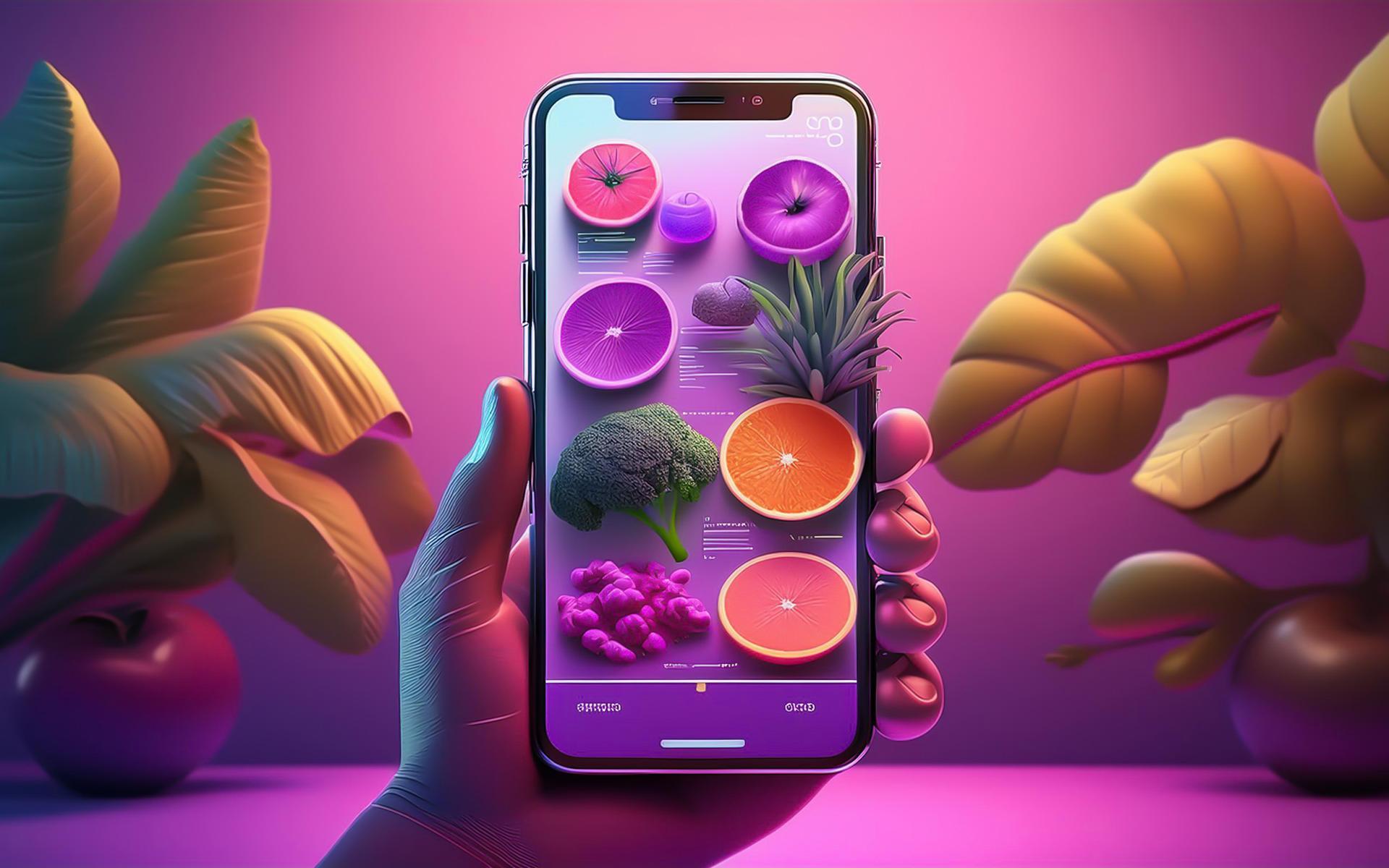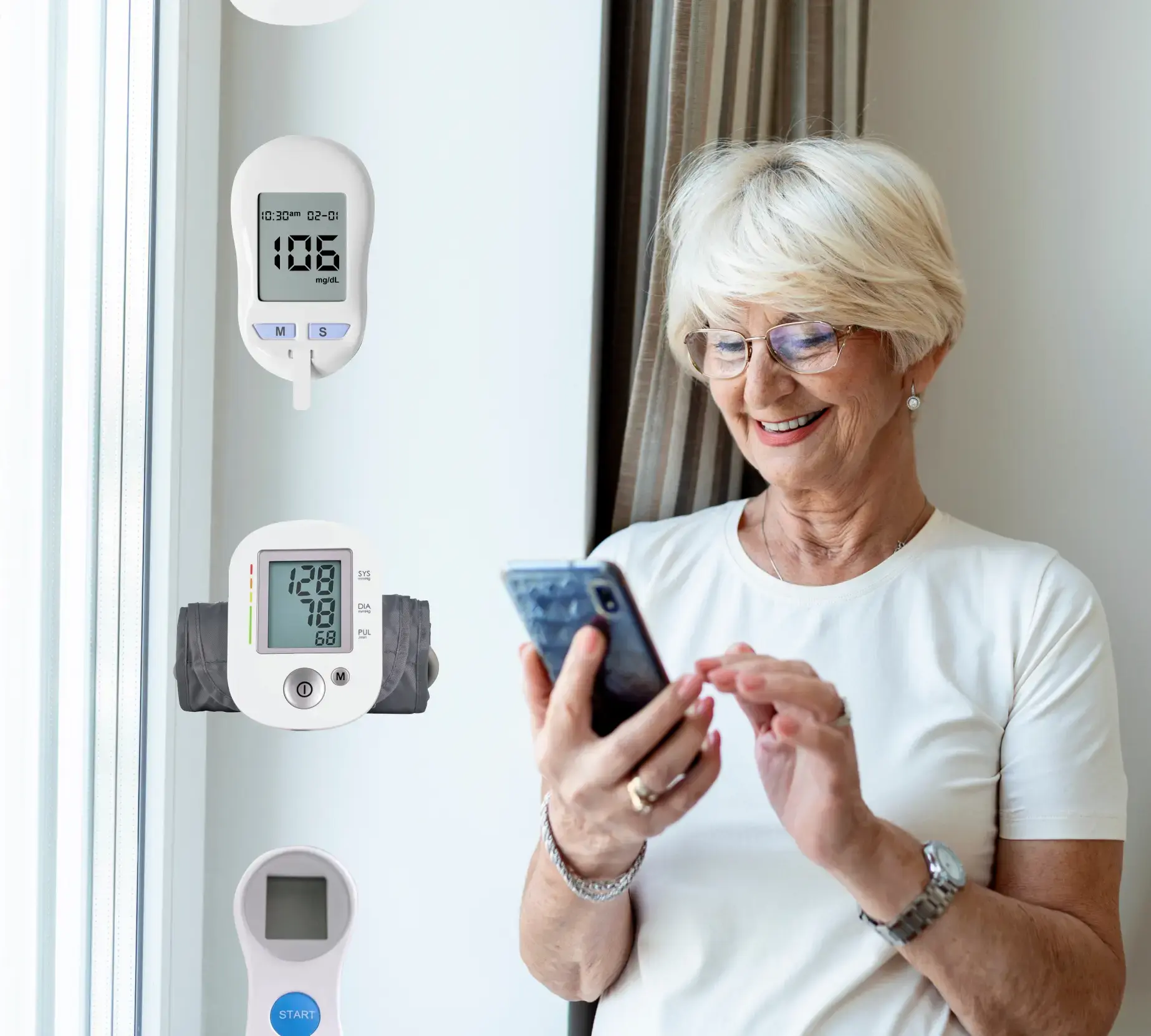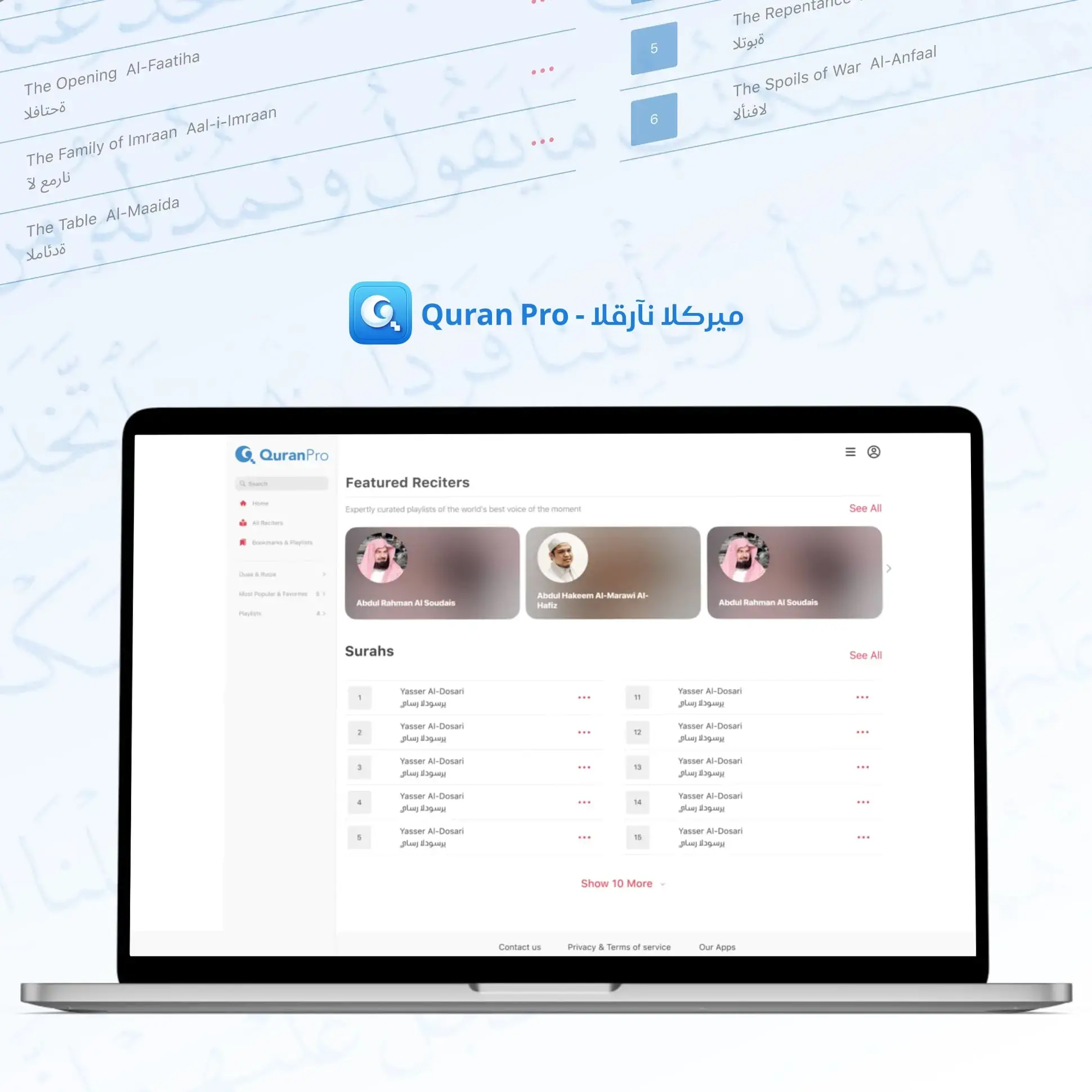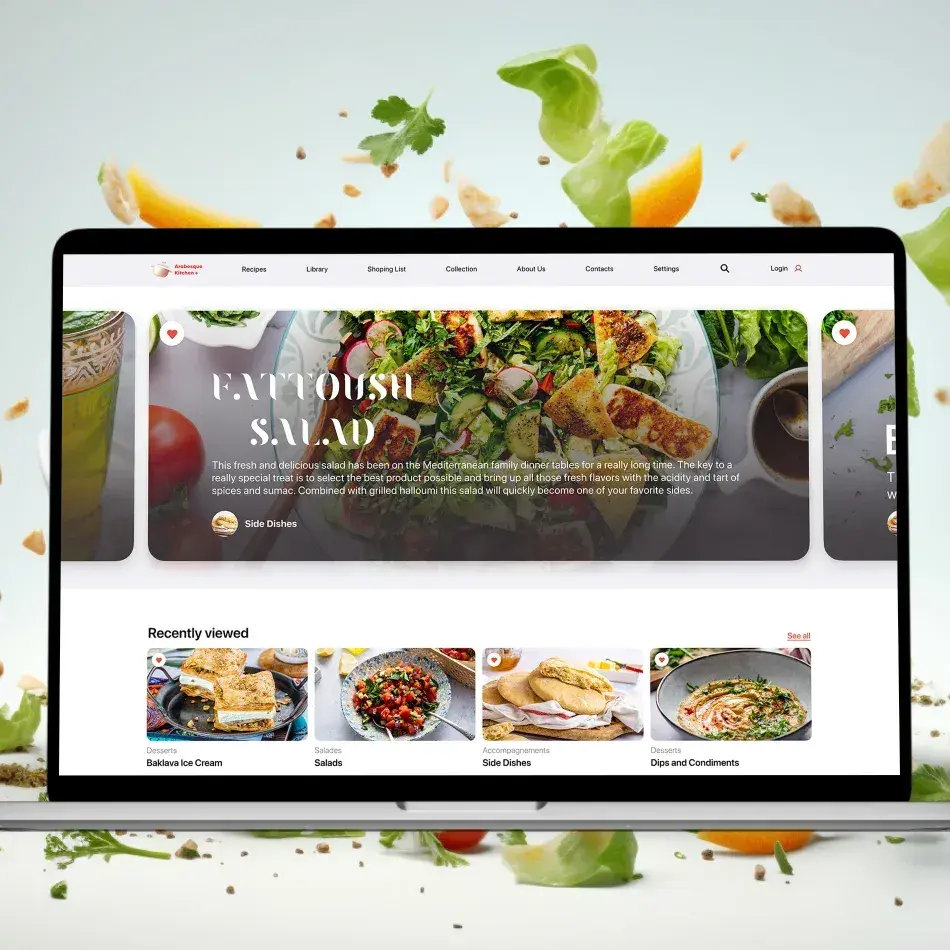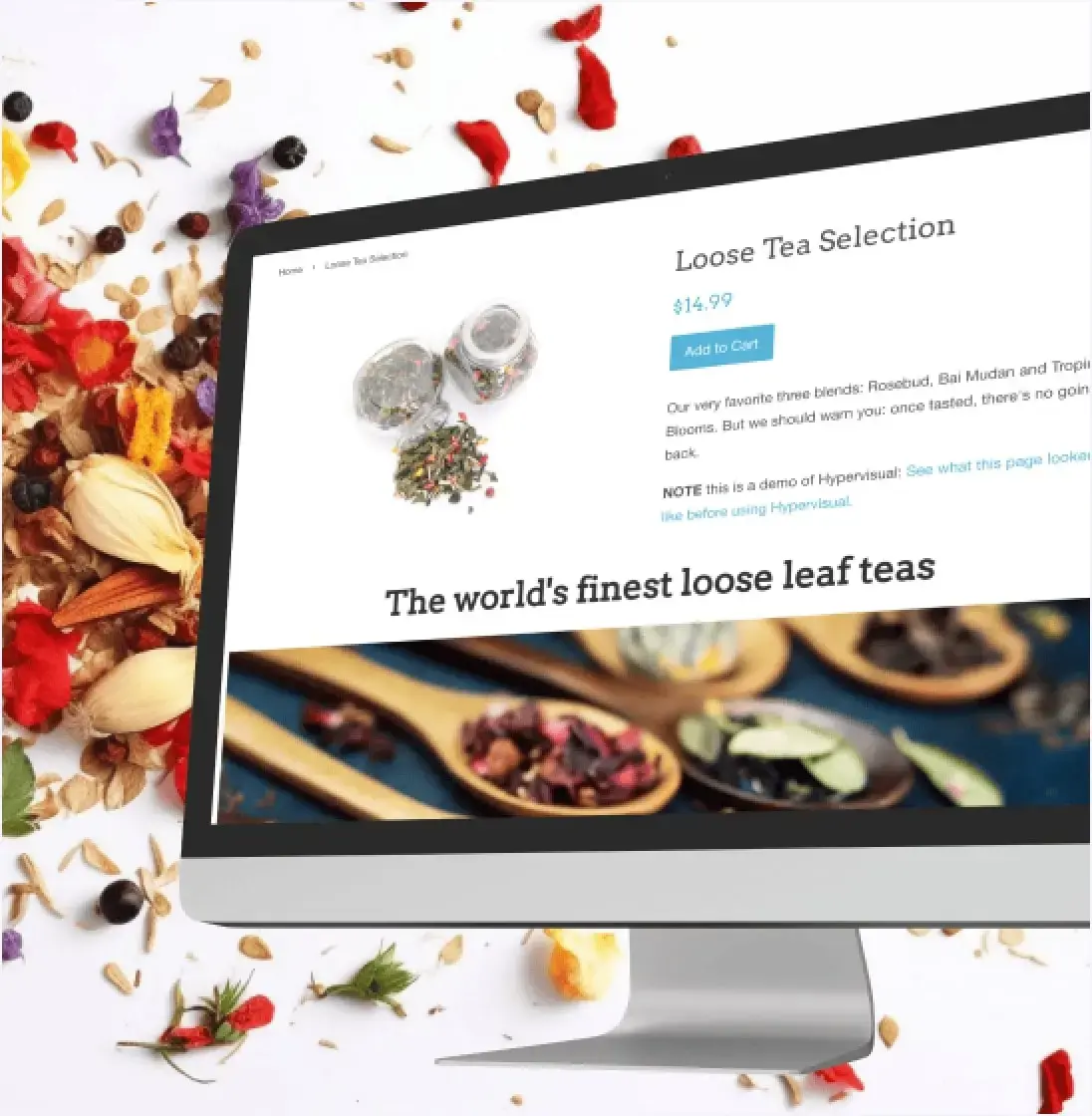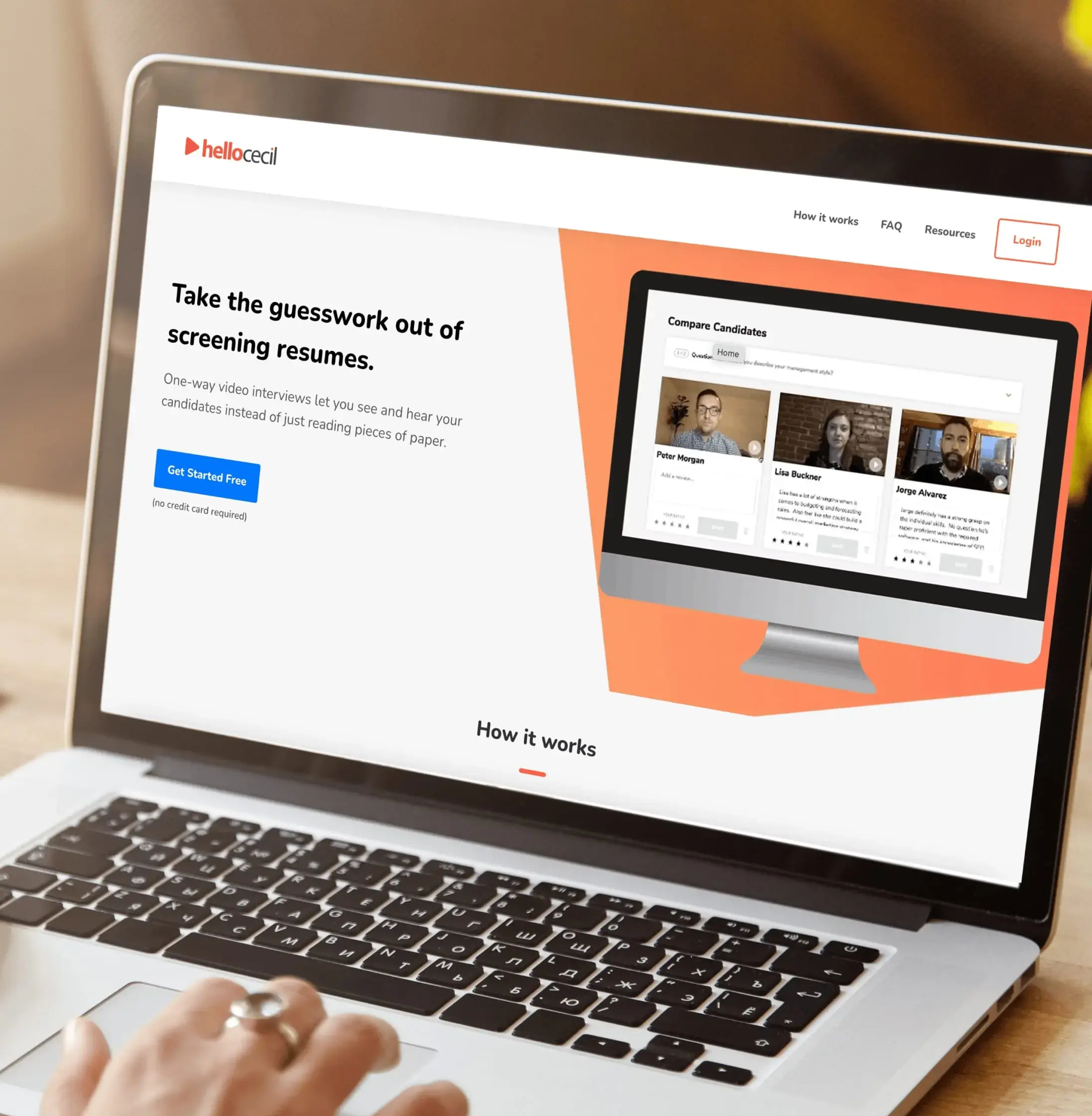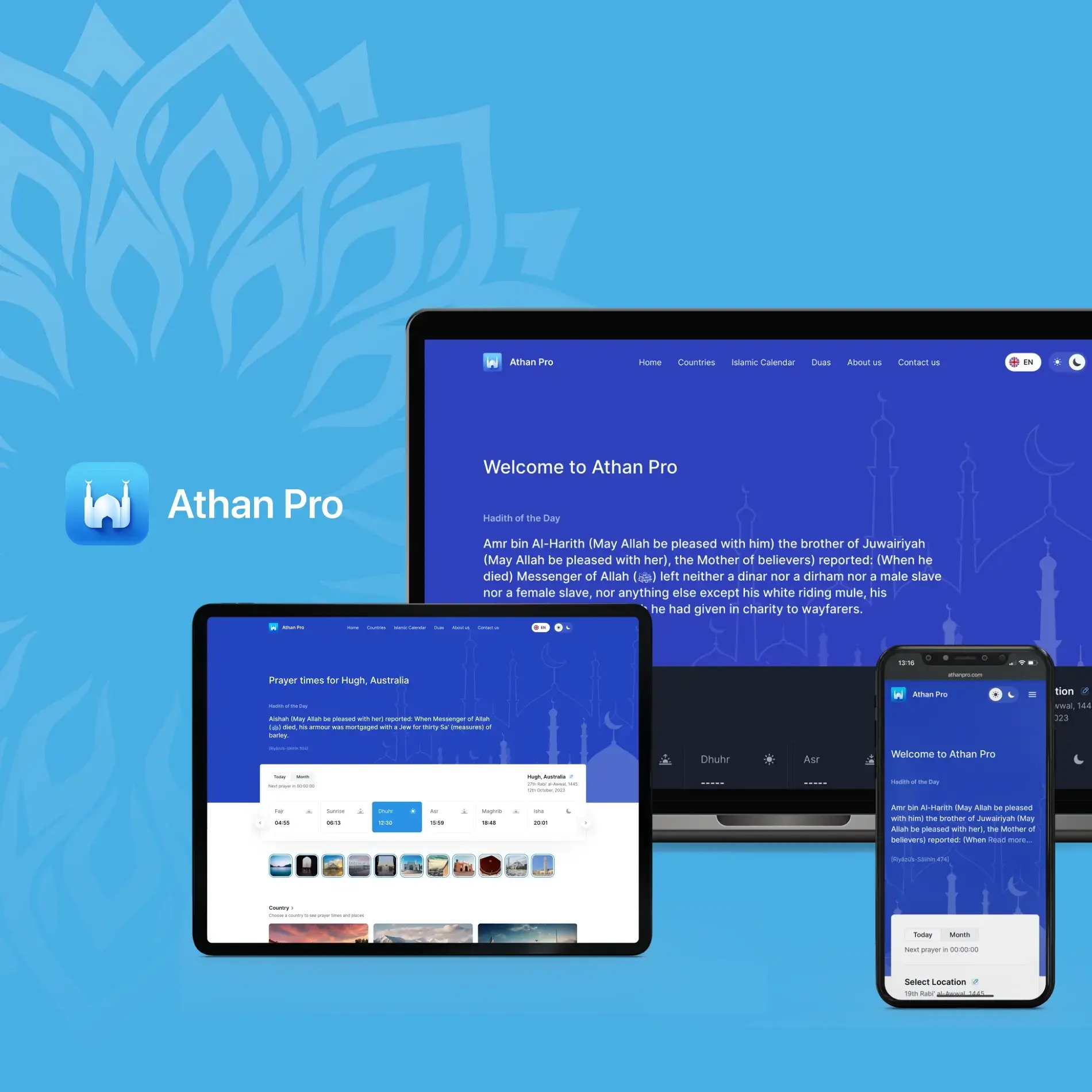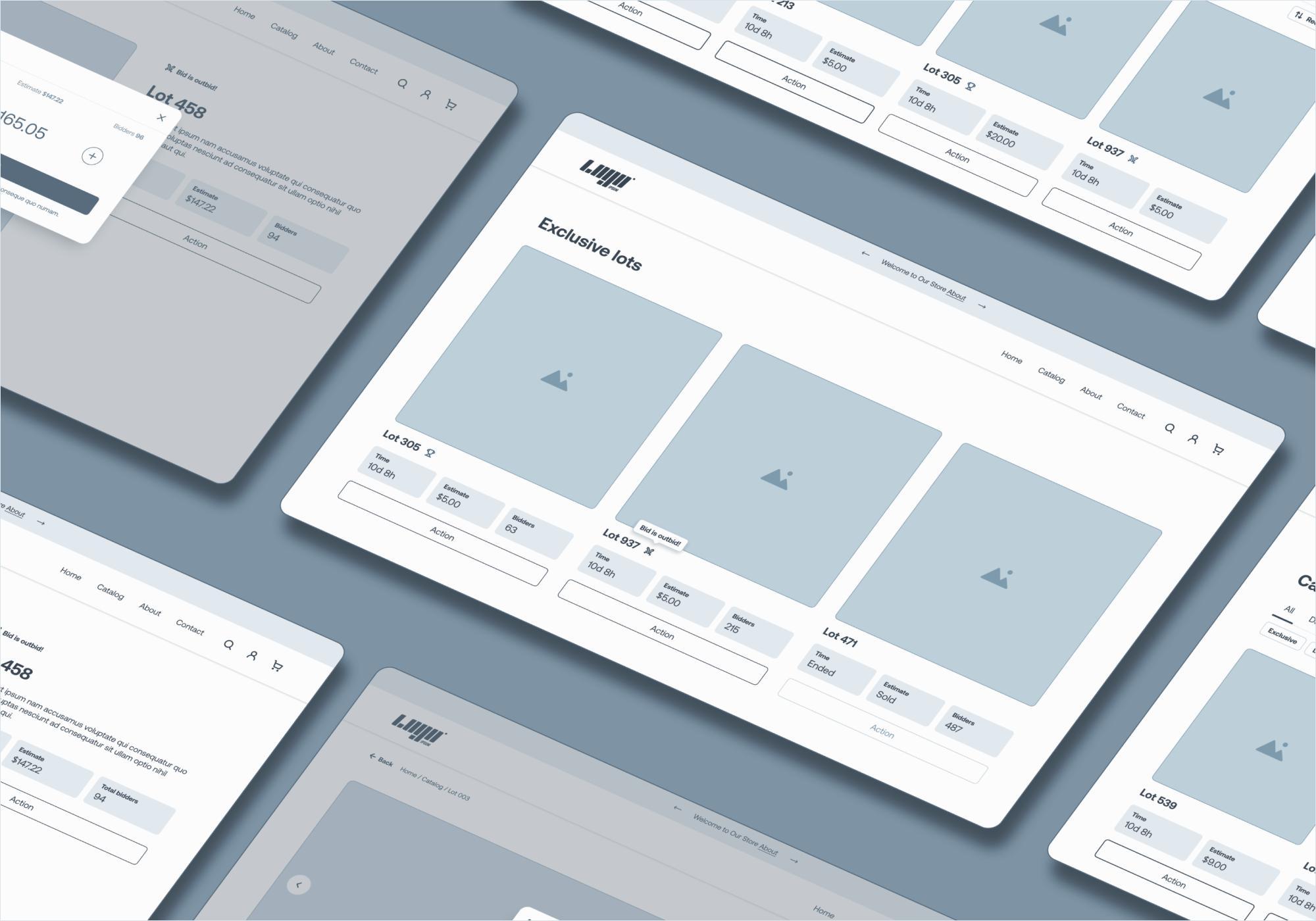Recent years have shown a strong push toward healthier lifestyles across the world, buoyed by online trends and government initiatives. Thus, the market for nutrition app development is right in the spotlight, and there is plenty of interest in creating new apps. However, if you want to take full advantage of the booming market and capture a share of the audience, you need insight.
JetBase’s extensive guide to creating nutrition apps will cover everything, from the state of the market to the development process and monetization opportunities. With this, you will not only know exactly how to make the app but also how to make it a resounding success. Using our experience in creating top-rated apps, we will share industry insider knowledge to help you get started.
So get ready to learn from true experts in mobile app development, and let’s take a thorough look at diet apps. By the end of this, you’ll learn how to help people count calories while counting profits from your new app. Once you’re done reading, don’t hesitate to get in touch and get your project started.
Diet and Nutrition Apps Market Overview
Let’s start with the obvious. The market for nutrition app development is in excellent condition, with more growth forecast for the next decade. In fact, one report predicts a 35 billion market cap by 2031 while assessing the current level at 9.5 billion. So we’re about to go from an already healthy market to an absolutely booming one. This means it’s high time to get on board and carve out a niche.
As for popular apps that conquered the market, there are a few key ones:
- Lifesum;
- MyFitnessPal;
- Carb Manager.
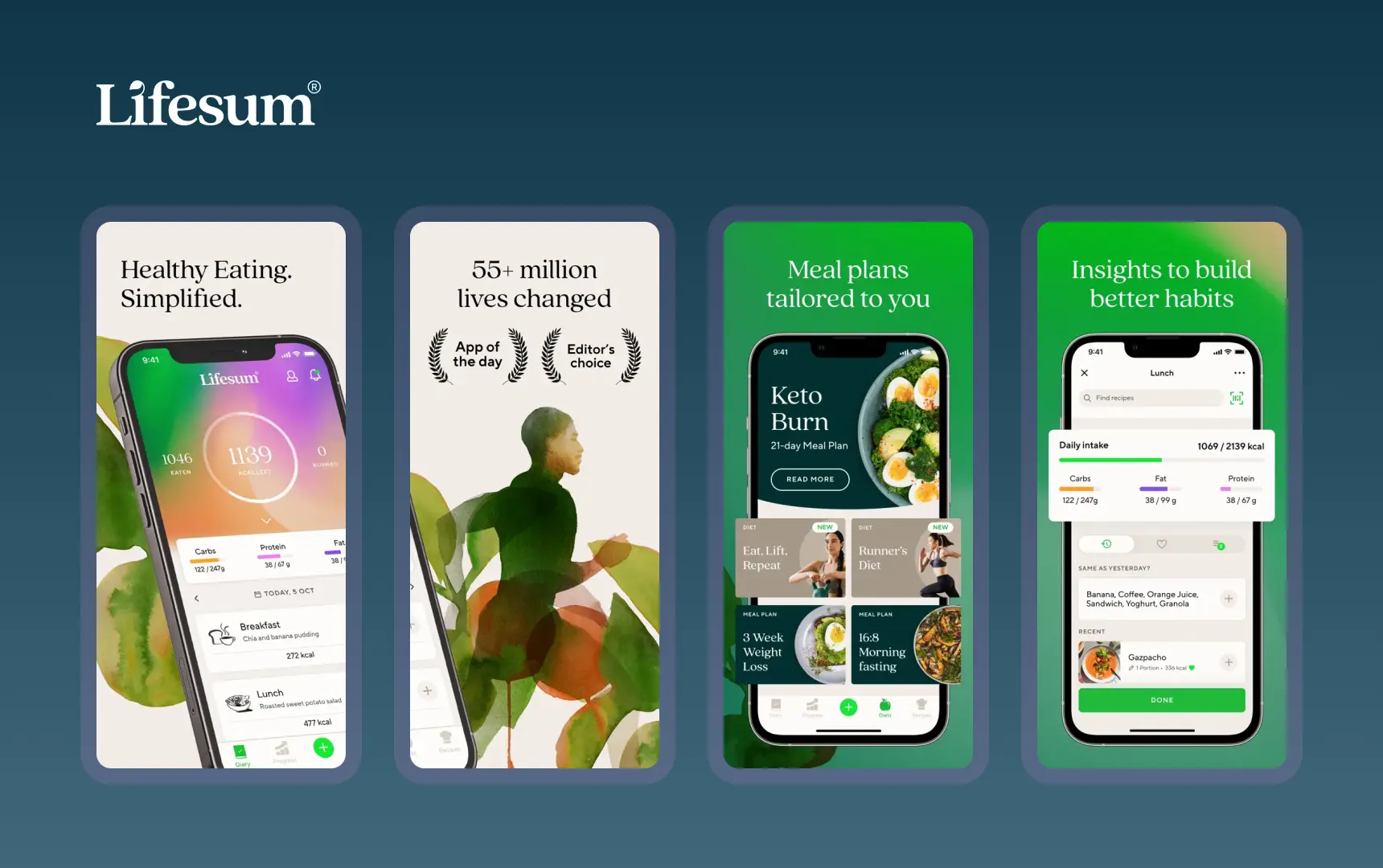
Lifesum is an award-winning nutrition app that helps users track calories, analyze their food intake, and create meal plans for weeks to come. Thanks to its bright interface and sleek design, the app garnered a lot of popularity with over 60 million downloads. It’s a great example of smart nutrition app development emphasizing eye-catching looks and broad functionality.
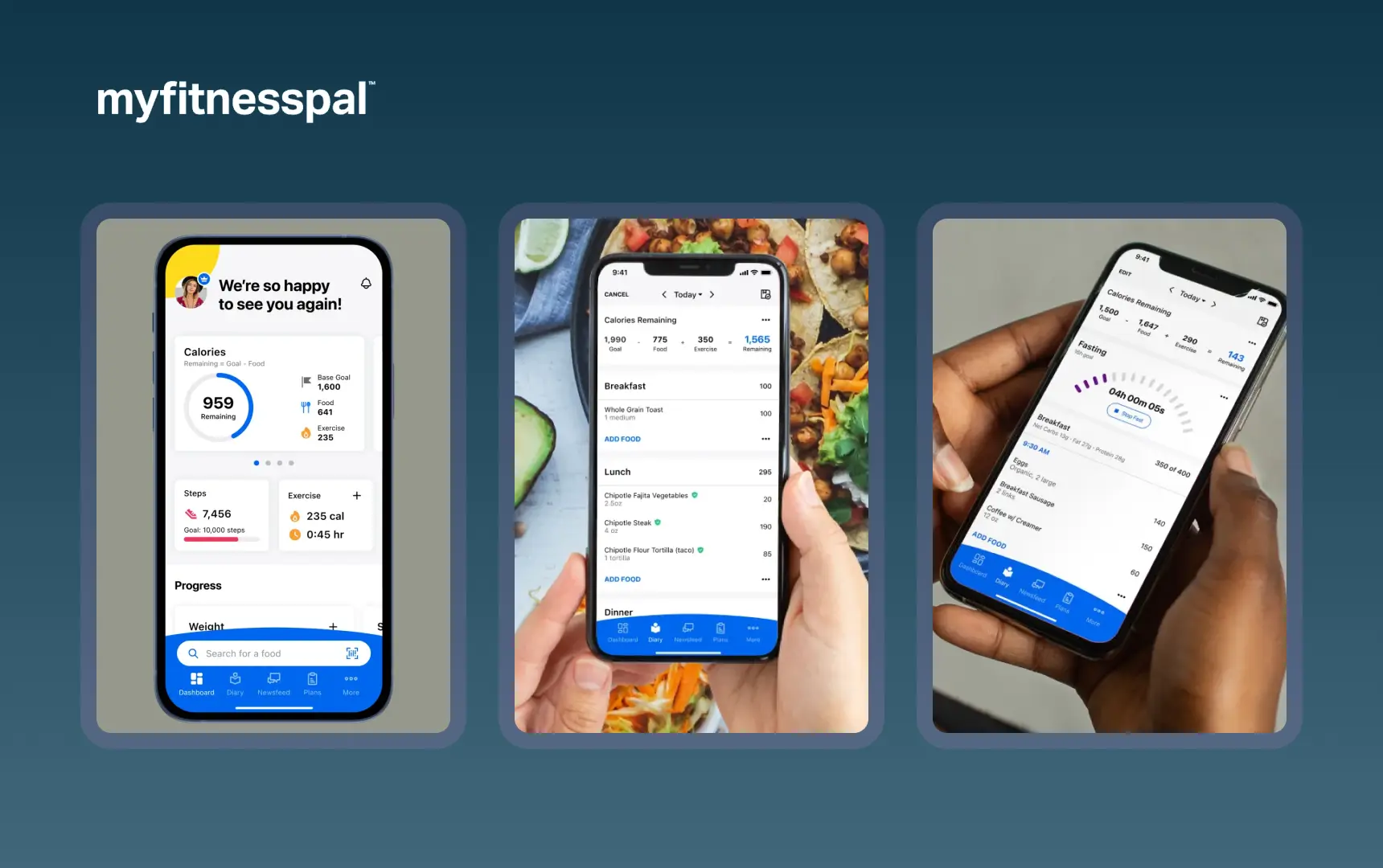
MyFitnessPal is, as you can tell by the name, a bit more focused on exercise and physical activity. It does, however, offer calorie counting features, as well as assessing one’s body mass. Its popularity is undeniable, as the app has been featured on CNN and BBC and gained more than 100 million downloads.
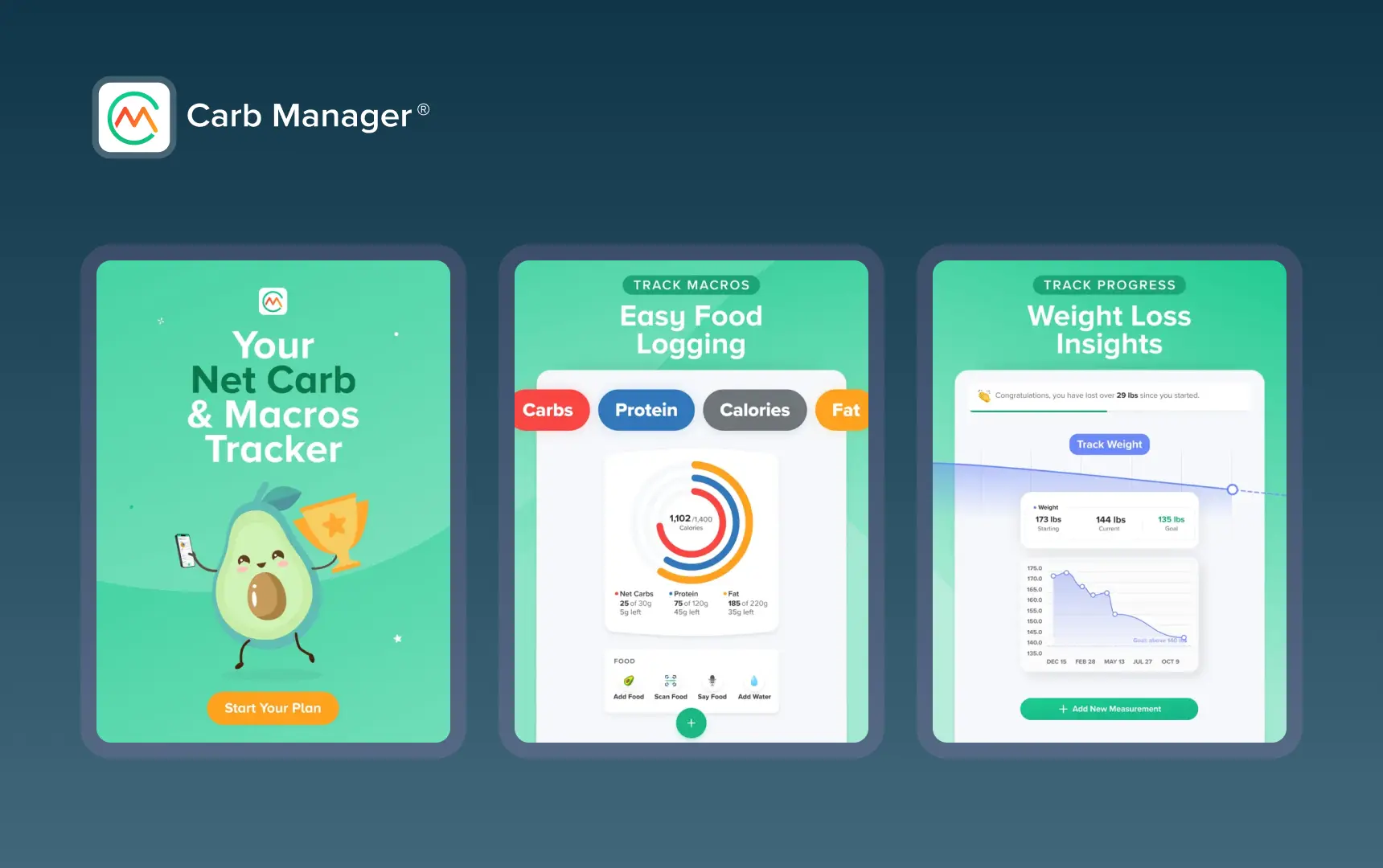
Carb Manager, despite its simplistic name, is another hit with the public. Perhaps it’s due to the app’s straightforward feature set and clean UI, as you can easily track your meals and nutritional intake. It is, however, focused specifically on the Keto diet, meaning those seeking another diet will have to look elsewhere. Perhaps this limitation is why Carb Manager only has 8 million downloads, which still makes it a major success.
| App Name | User Base | Focus |
|---|---|---|
| Lifesum | 60 million | Nutrition analysis and food planning |
| MyFitnessPal | 100 million | Physical activity and calorie counting |
| CarbManager | 8 million | Keto dieting and nutrition management |
How to Start Your Diet and Nutrition App Development?
So, now that you know the market is worth entering, how exactly do you do it? Well, you start by making an app, of course. Here’s how to take the first steps in that direction. We’ll cover all how you can create a clever, sellable concept.
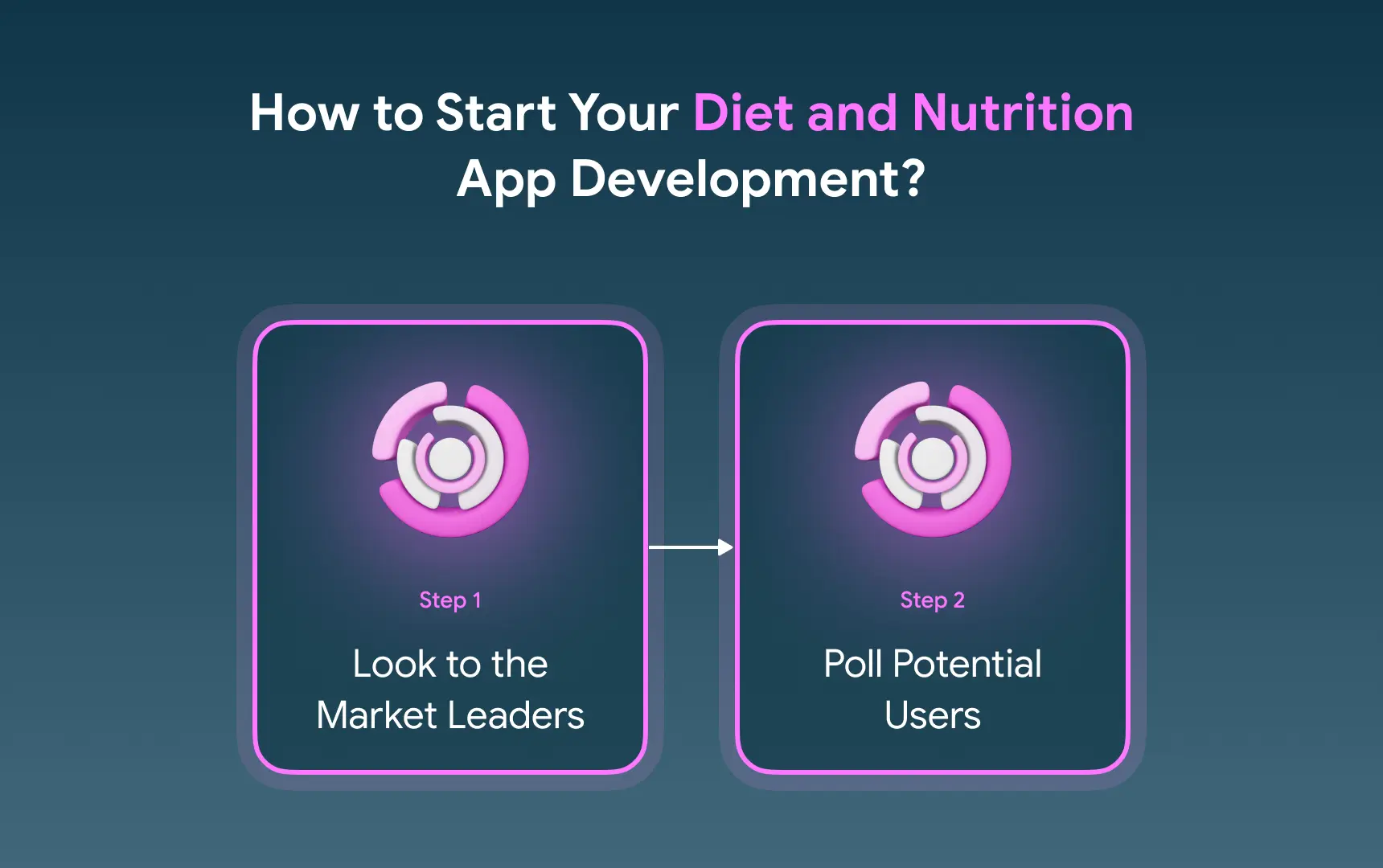
Look to the Market Leaders
You’ve surely heard the quote, “Good artists copy, great artists steal.” While we would never encourage the latter, it would be wise to take inspiration from those who have turned their ideas successful. If all of your future competition jumped at the chance to implement a specific feature, chances are you want it, too. Similarly, analyzing their design decisions will help you avoid potential problems.
Poll Potential Users
While other companies may have paved the path to success, there’s always something more you can do as a nutrition app developer. Instead of basing your decisions on trends or hunches, go to the source and ask your target audience. Do they find that most apps lack a flexible notifications system? Or, perhaps, more robust IoT integrations? By asking the right questions, you can refine the concept of your app to absolute perfection.
Diet and Nutrition App Types
Another vital step of diet and nutrition app development is knowing what you’re creating and what you’re trying to achieve. This is why we’d like to list the current types of nutritional apps and discuss what sets them apart. We’ll cover:
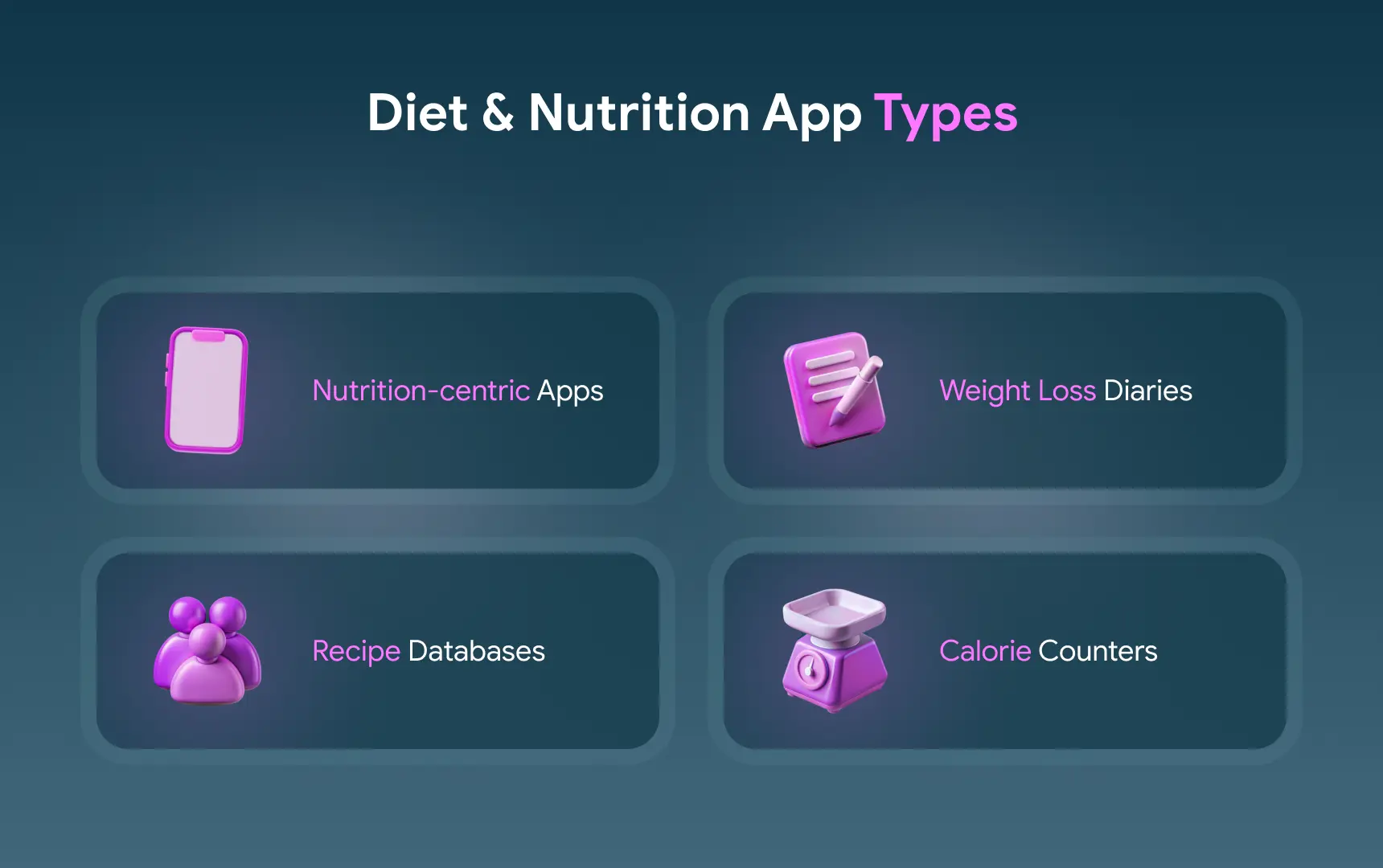
Nutritional Apps
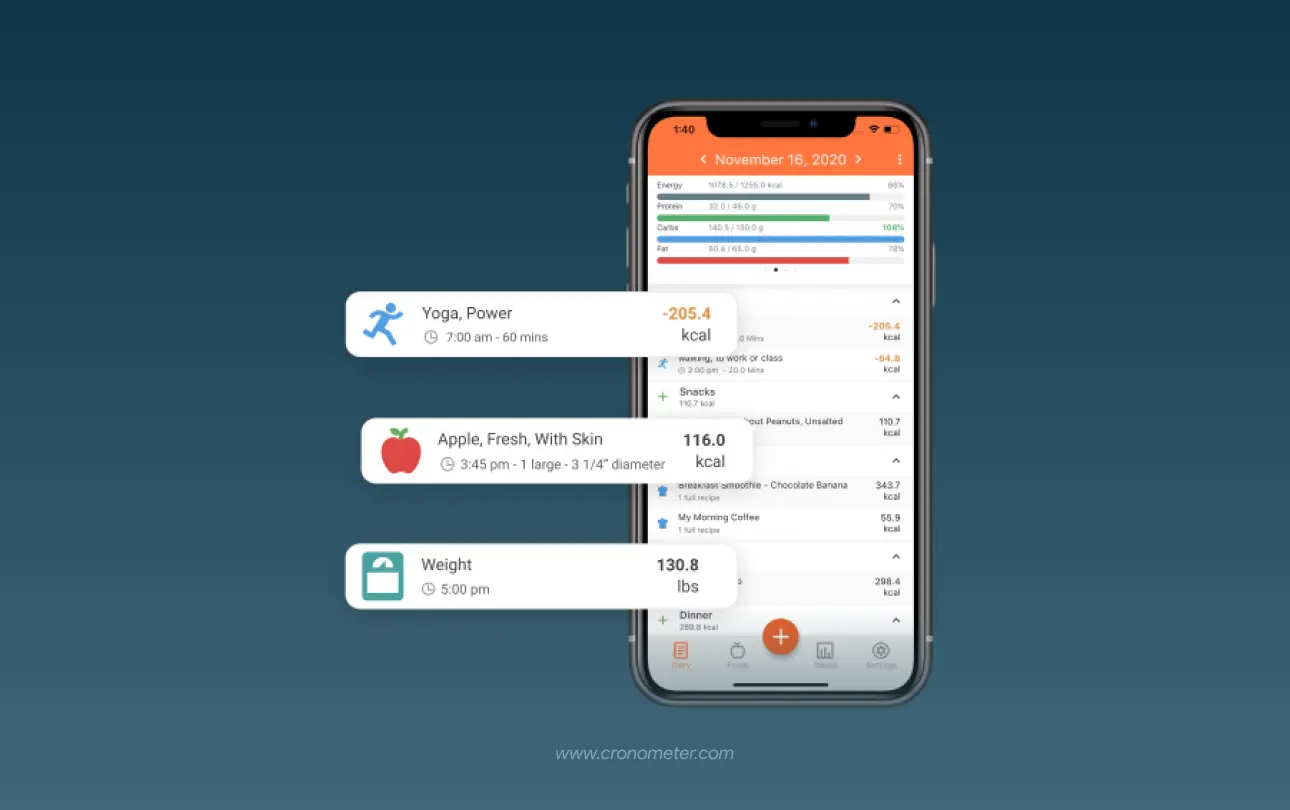
These apps focus specifically on what the user eats and the chemical makeup of the food. They help detect how much fat, sodium, cholesterol, etc., is in the food one consumes. As a result, it’s easier to stick to specific diets, as well as cover a body’s deficiencies. Such apps are usually quite straightforward, serving basically as a database of typical products and information about them.
Diet Diary
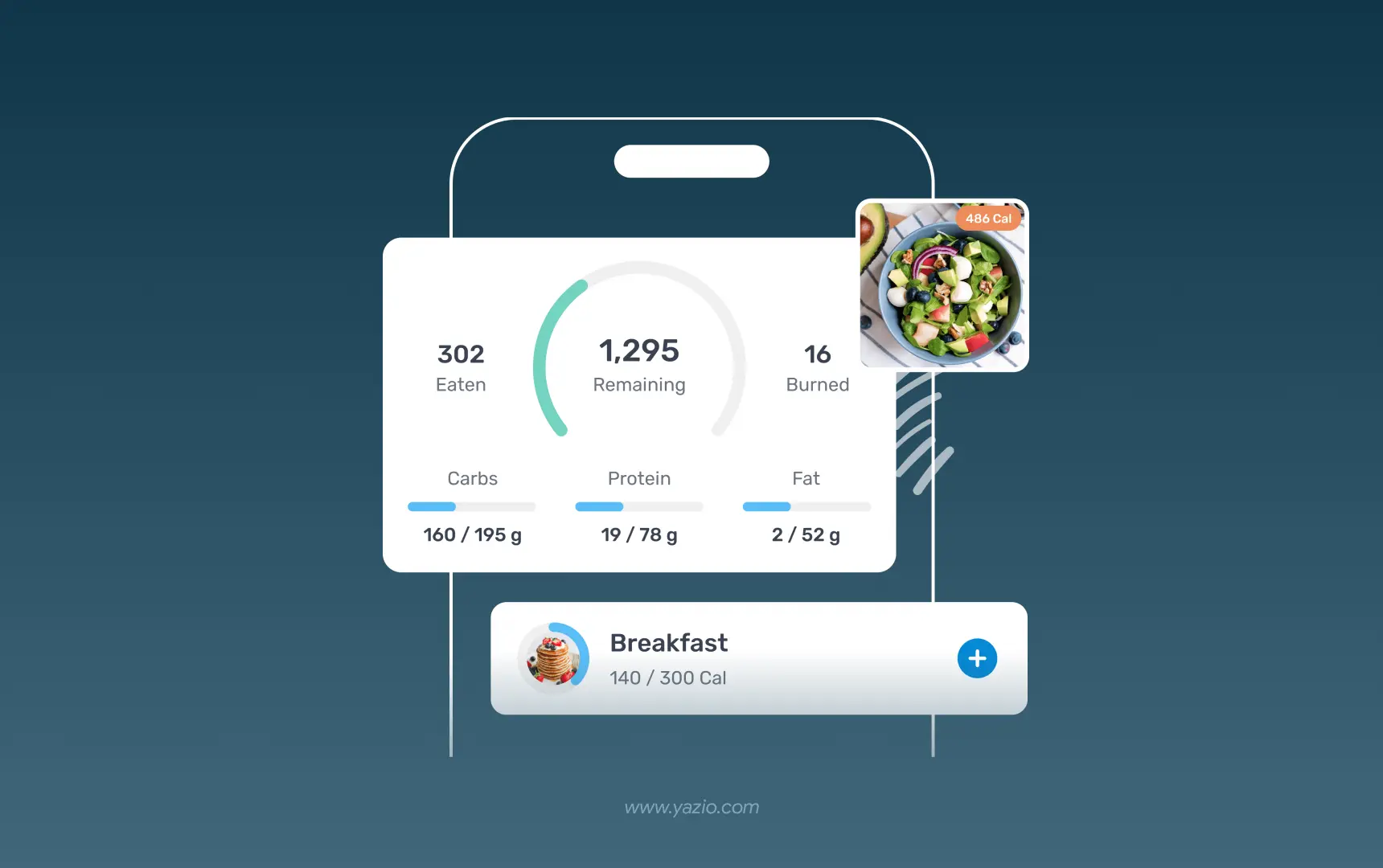
Diary apps serve as a place to track food intake, develop healthy habits, and journal about one’s progress. The hope is that recording the journey to weight loss will help users and encourage them in moments when sticking to a diet may be hard. Apps like this usually have a light, friendly tone of voice and a colorful, appealing design. Part of diet planner app development is treating the app as a safe space for users.
Calorie Counters
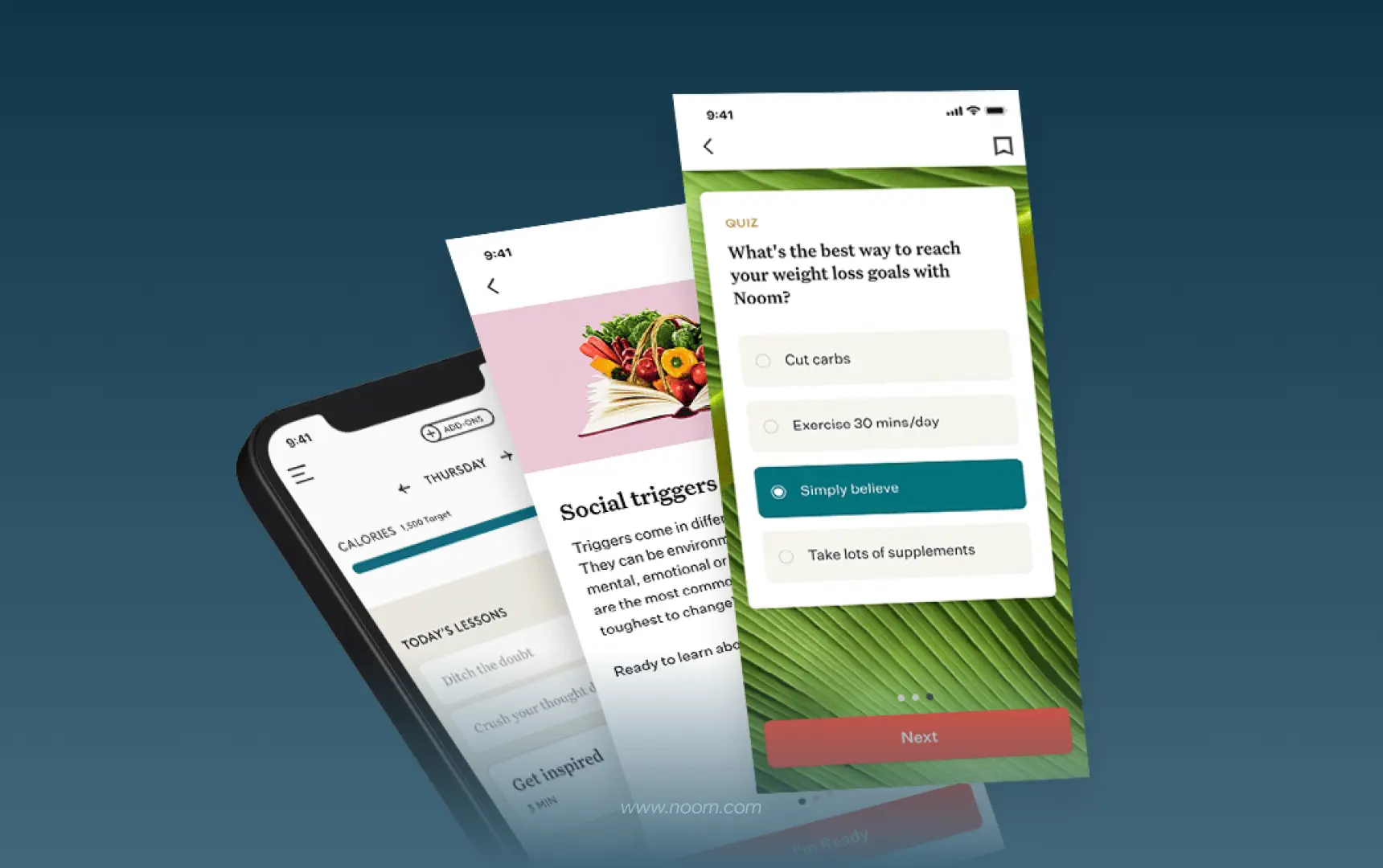
This type of dieting app is specifically about limiting or increasing caloric intake throughout the day. Much like nutrient-focused apps, these have a database of products and usually allow one to scan the barcode at a grocery store to instantly get information. The trick to making these apps useful lies in not just building a big database but also providing data on why calorie counting is crucial.
Recipe Databases
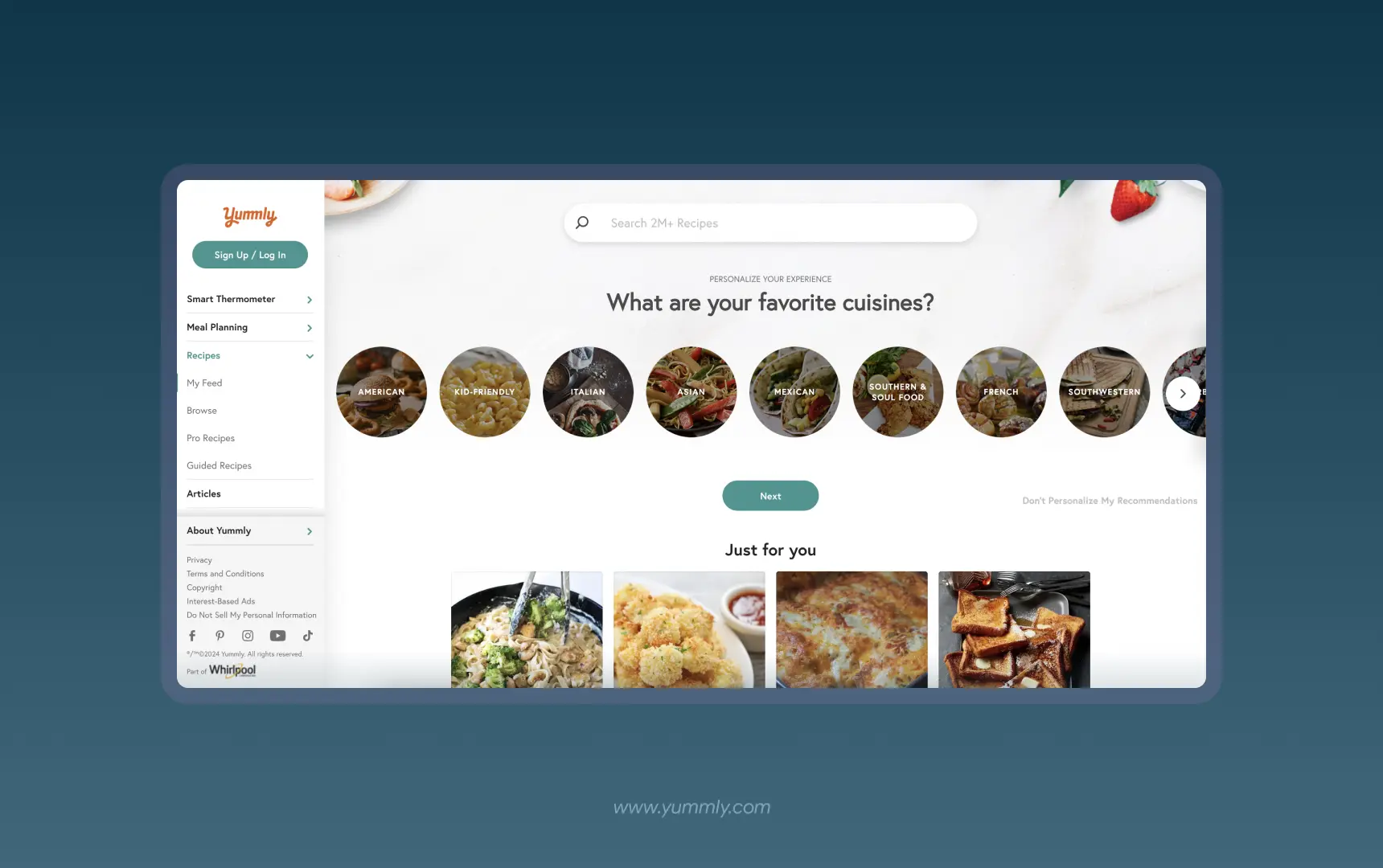
A steady meal routine is part of building good habits and sticking to a diet. Doing so is easier when a user has access to plenty of healthy recipes that fit their personal requirements. Recipe databases cover that use case and can achieve a good level of success if they come with regular content updates and interactive elements. Recipe videos and live cooking classes are two great options for boosting your app’s popularity.
| Type | Focus |
|---|---|
| Nutritional Apps | Analyzing nutritional intake from food. |
| Diet Diary | Tracking weight loss journeys. |
| Calorie Counters | Counting calories from meals. |
| Recipe Databases | Providing a library of healthy recipes. |
Features of Diet and Nutrition Apps to Consider
While everybody wants to put their own spin on their product and reach a wider audience that way, some functionality is simply essential. Here are some features that your dieting app must have, ones that any decent nutrition app developer will include in their work.
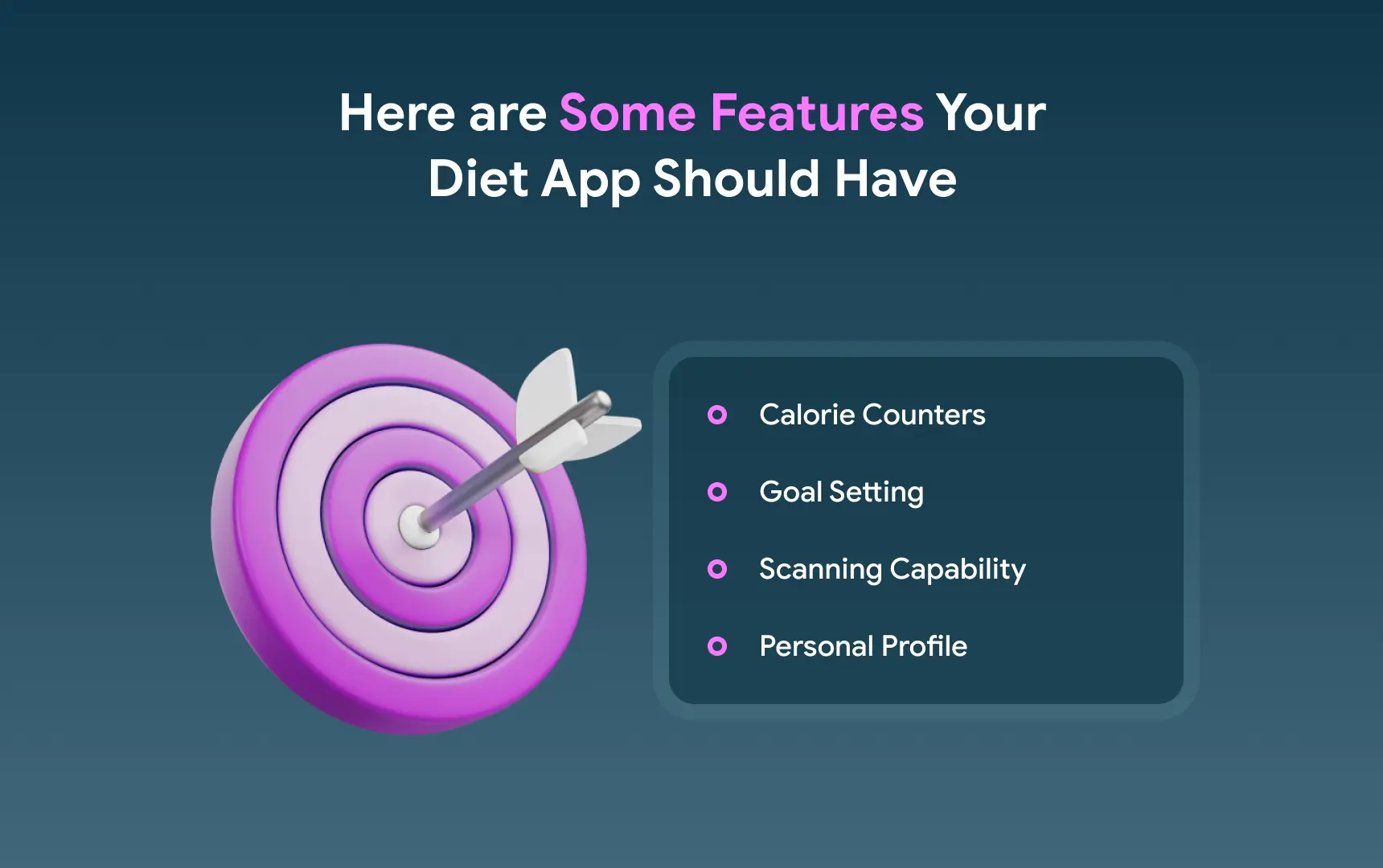
Feature #1: Calorie Counters
Whether you focus on nutrition, recipes, or specific diets, a calorie counter is the foundation. You want to display how much a recipe will total and give users the ability to scan a product or meal and analyze its caloric value. After all, if they want to diet, this is one of the simplest tools to help them reach their goal.
Feature #2: Goal Setting
Give users the ability to outline their meal plans, structure their weight loss, or just schedule meals. Couple it with flexible notifications reminding them about their dieting, and you have a useful feature focused on long-term health. It’s a cornerstone of nutrition app development and encourages longevity for your app.
Feature #3: Scanning Capability
This will be used to scan product barcodes or restaurants’ QR codes to analyze their menu. As a result, users will know the exact caloric and nutritional value of their meals and can plan their intake. Without a simple one-tap scanner, you’d be forcing users to type in barcode info manually, which is just not a practical UX decision.
Feature #4: Personal Profile
Users will rely on this as their control panel, where they can share info about themselves, change their dieting plans, or simply record their thoughts on their weight loss journey. It gives people something to connect to, as well as a place to centralize their dieting needs.
How to Create a Nutrition App: Step-By-Step Process
Now that we’ve covered app types, features, and ideas, let’s talk about how to actually make one. We’ll take things step by step to fully cover the basics of diet and nutrition app development.
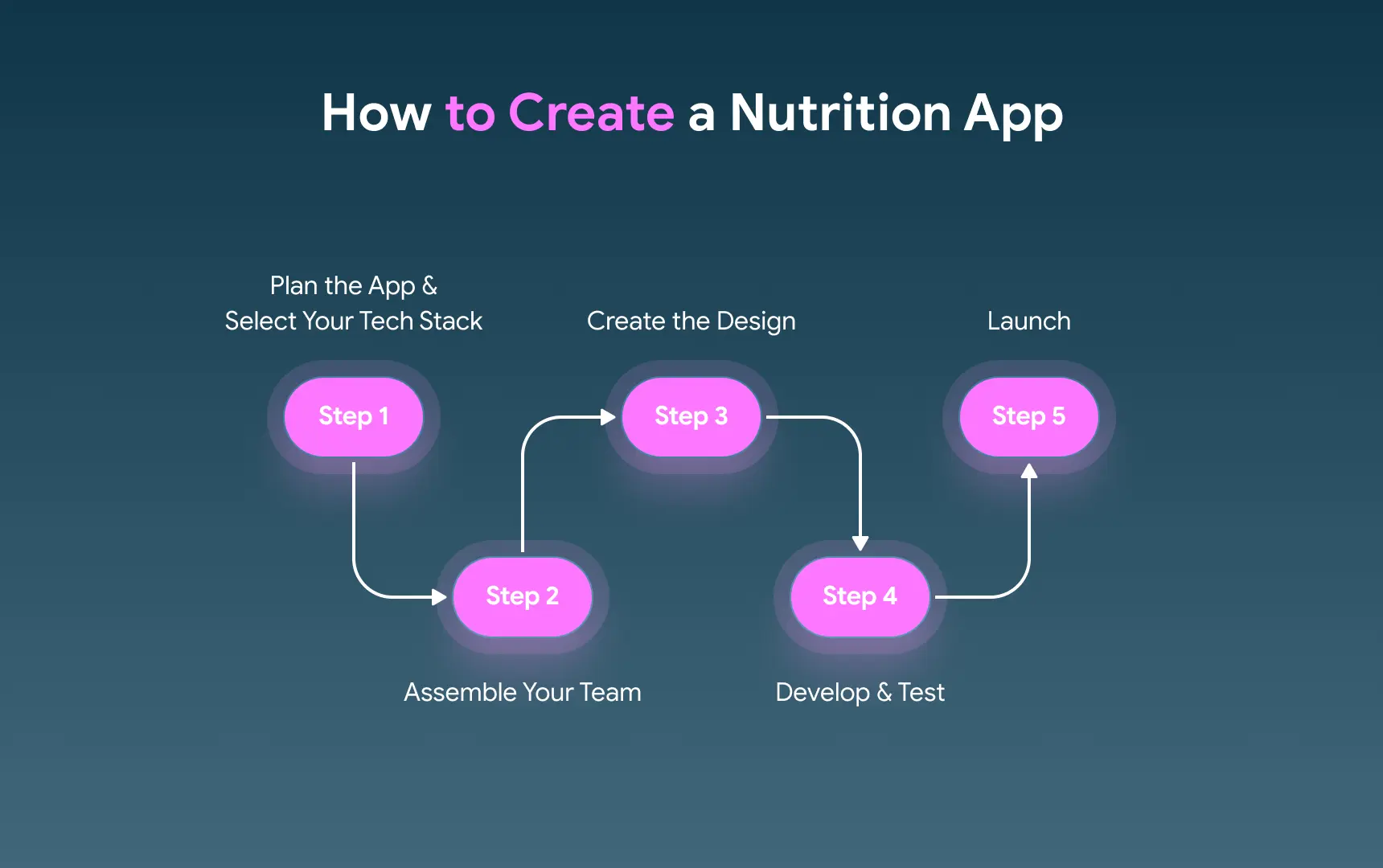
Step 1: Plan the App and Select Your Tech Stack
Aside from deciding your features and planning for inevitable success, you also need to decide your app’s architectural makeup. Choose the frameworks and languages that will fit your core priorities. This step gets more complicated the more platforms you want to release on, as well as based on the features you seek to implement.
Step 2: Assemble Your Team
You could give the task of developing the app to your in-house specialists, provided you have those with the right qualifications. However, outsourcing may be the way to go if you don’t have the full team available or simply wish to give the job to people with experience in this specific area. It’s a choice that can help keep the development within a specific budget while offering very high quality for the final product.
Step 3: Create the Design
Crafting your UI and UX is absolutely vital in nutrition app development, as you want your app to be instantly eye-catching and stand out in the sea of other nutrition applications. However, it’s also important to provide your users with sleek and intuitive navigation and responsive features. You want to make sure the user is never frustrated or feeling like the app is slow.
Step 4: Develop and Test
Here, your team gets down to business and crafts your product, implementing key features and creating different builds until the app is fully optimized. To make sure the level of polish is sufficient, the app is then turned over to the QA team, which tests it to iron out all the bugs. As a result, you should filter out any obvious issues and help adjust features for the final build.
Step 5: Launch
Once all is said and done, your app should be in a great state, which means it’s ready to meet its target audience. Targeted marketing will help you get a nice start, which you can use to leverage analytical data about your users and their needs. After that, you can continue the job of a nutrition app developer and deliver meaningful updates to improve your app.
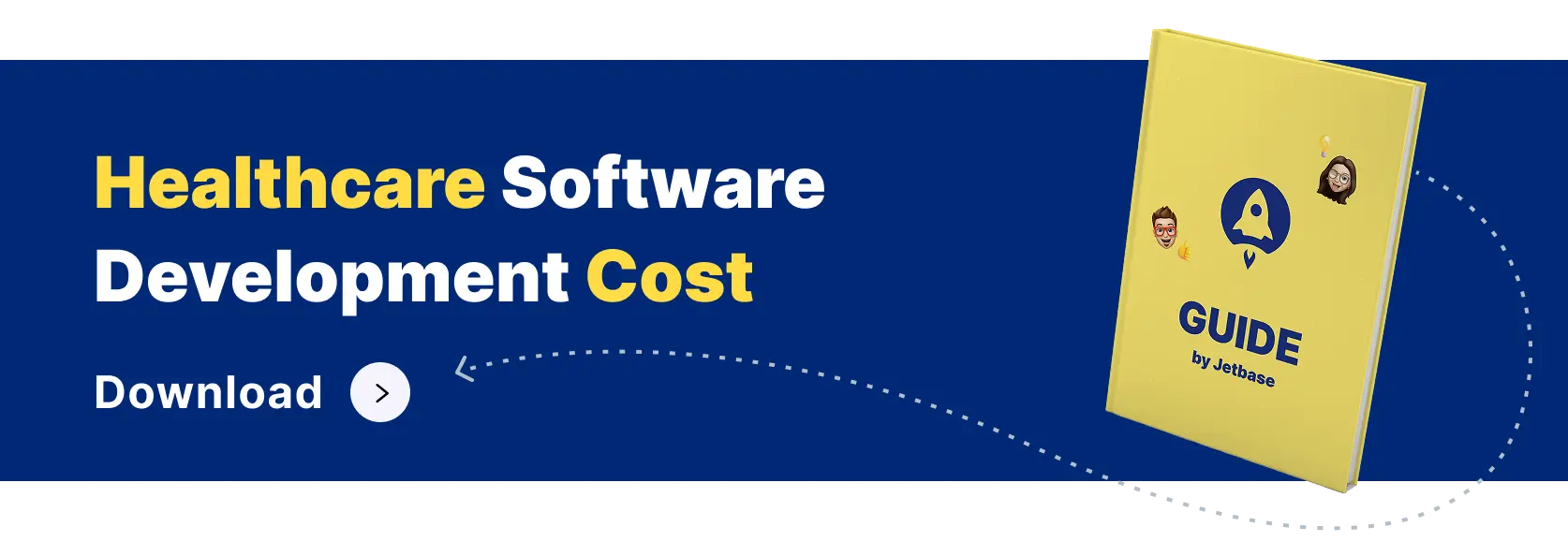
Tools for Diet and Nutrition App Development
It’s best to rely on APIs to guarantee that your app’s usability is high and that you’re offering some high-class features. Sure, you could make everything from scratch, but that won’t give you that many advantages in nutrition app development and will really slow you down. So, instead, take a look at external tools that will make your product better and choose which fit you best.
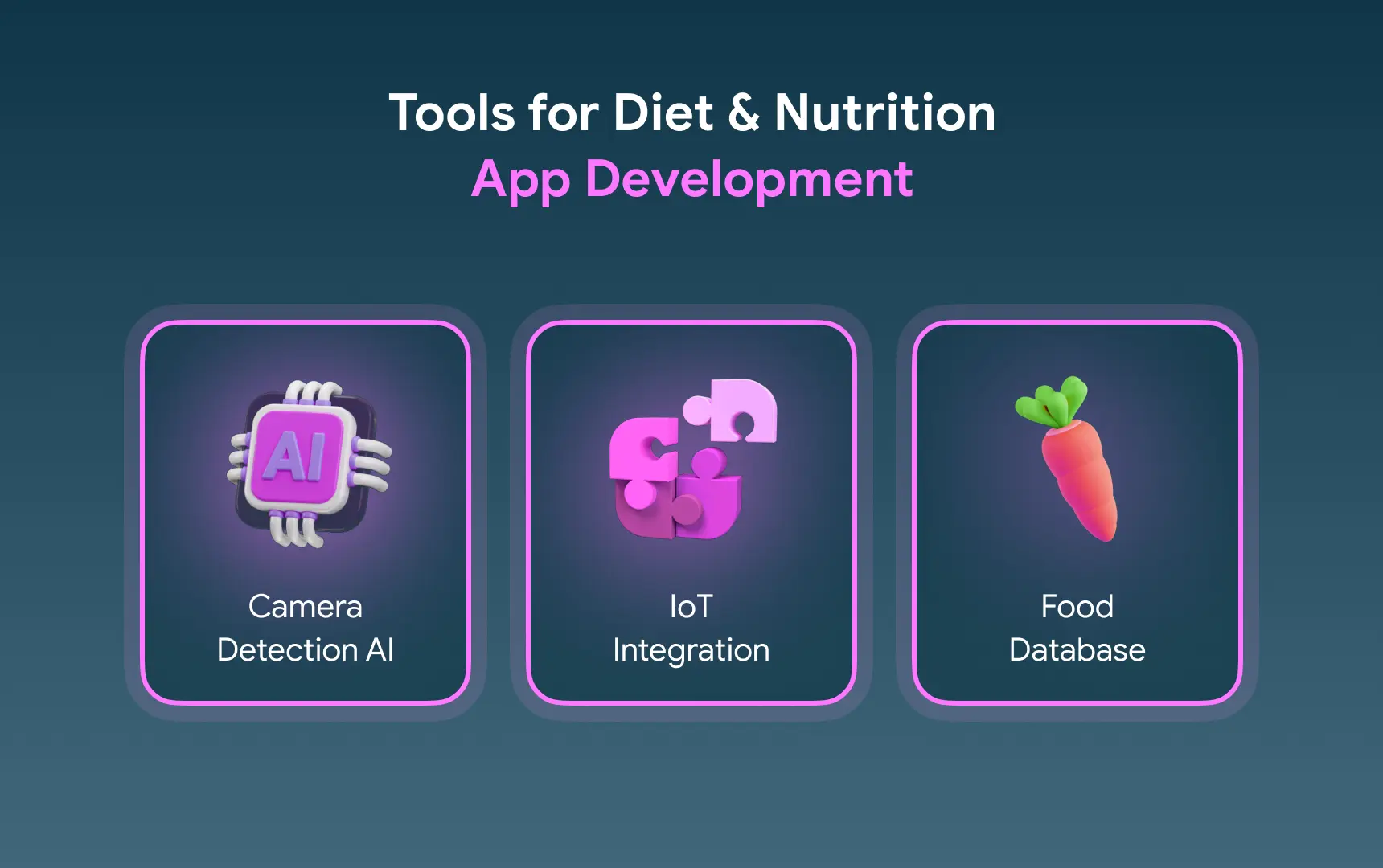
Camera Detection AI
Using the sophisticated Calorie Mama AI model, you can let your users scan their environment and, when the camera detects food, analyze its caloric value. That kind of analysis requires extensive data training, so relying on an already prepared model is the smarter approach. You can have your app judge the portion size and the weight of the food to accurately assess users’ eating habits.
IoT Integration
Connecting to different wearables should let the app track users’ fitness routines more accurately and ping them with relevant notifications to greater effect. Instead of crafting your own protocol for that integration, you can use Garmin or Fitbit in your nutrition app development. The result is the same, but you’ll save time by using a time-tested API that works.
Food Database
You can rely on the FoodData Central API to provide users with all the nutritional information on standard groceries and ingredients. It covers pretty much all the popular choices from North America, making it great for those targeting the US and Canadian markets.
Nutrition App Development Challenges to be Ready For
It’s important to acknowledge that a process as complicated as diet and nutrition app development doesn’t come without obstacles. Navigating them is part of the team’s responsibilities. Using our experience, we’d like to share a few potential challenges you may face and how to work through them.

Protecting User Data
In addition to complying with regulations, one must also consider security measures just for the sake of the company’s reputation and user trust. Establishing tiered access and data encryption is a necessity, but it’s also important to inform users about those features. Provide an overview of security practices you used in nutrition app development and give users a choice to consent to data processing.
Ensuring Information Accuracy
Since you’re working with people’s health, it’s important to source your dieting and nutrition info from reliable, scientific sources. Otherwise, you’d be risking your users’ lives, which is never acceptable. We’ve already recommended the FoodData Central API and suggest relying on similarly approved knowledge bases for any content in your app - from blogs to dieting tips.
Retaining User Base
The process of diet and nutrition app development doesn’t end after launch if you want to keep your app successful. To retain your initial user numbers and keep people interested, you need to add meaningful content and implement new features.
| Challenge | Solution |
|---|---|
| Protecting user data | Follow best security practices and use consent forms |
| Ensuring information accuracy | Use official sources |
| Retaining user base | Keep creating new content and updating the app |
The Cost of Developing a Diet and Nutrition App
It’s hard to say just one number for the cost of diet and nutrition app development, as it varies based on the amount of work that goes into it. The bottom line number is around $35,000 while an app with all the latest features and the use of modern technologies would cost about $100,000.
How do we estimate that cost? The entire price can be divided into sections based on your development steps.
| App Element | Optimistic [months] | Pessimistic [months] |
|---|---|---|
| UX/UI design | 1 | 2 |
| API integration | 1.5 | 4 |
| Wearable integration | 0.25 | 1 |
| Multi-platform builds | 2 | 6 |
| Payment gateways | 0.25 | 0.5 |
| User dashboards | 0.5 | 1 |
| Total months | 5.5 | 14.5 |
| Cost, $ | 37,125 | 97,875 |
As you can see, each part of the app has its own price tag, and anything extra obviously adds to the cost. You should assess the budget before you start diet planner app development, but be ready to adjust it based on how the process goes. Sometimes it’s best to add an extra feature, as it could recoup its cost easily while adding usability to the app.
Nutrition App Monetization Strategies
Having discussed the cost, we’d be remiss to ignore how you can recoup your investment into diet planner app development. There are a few core approaches to monetizing a nutrition app:
- In-app ads;
- Premium subscriptions;
- Purchasable content.
Ads are quite self-explanatory, of course. You simply run relevant ads for local gyms, sporting equipment, or healthy meal prep services. For maximum effect and revenue, you can partner up directly with these companies, promoting them in the app’s ads and content.
Premium subscriptions are a good way to monetize as well, but they require you to include some special functionality for premium users only. It has to be planned for during nutrition app development, and the features have to be unique and valuable enough to be worth the price. For example, you can provide consultations with nutrition professionals or custom-made meal plans.
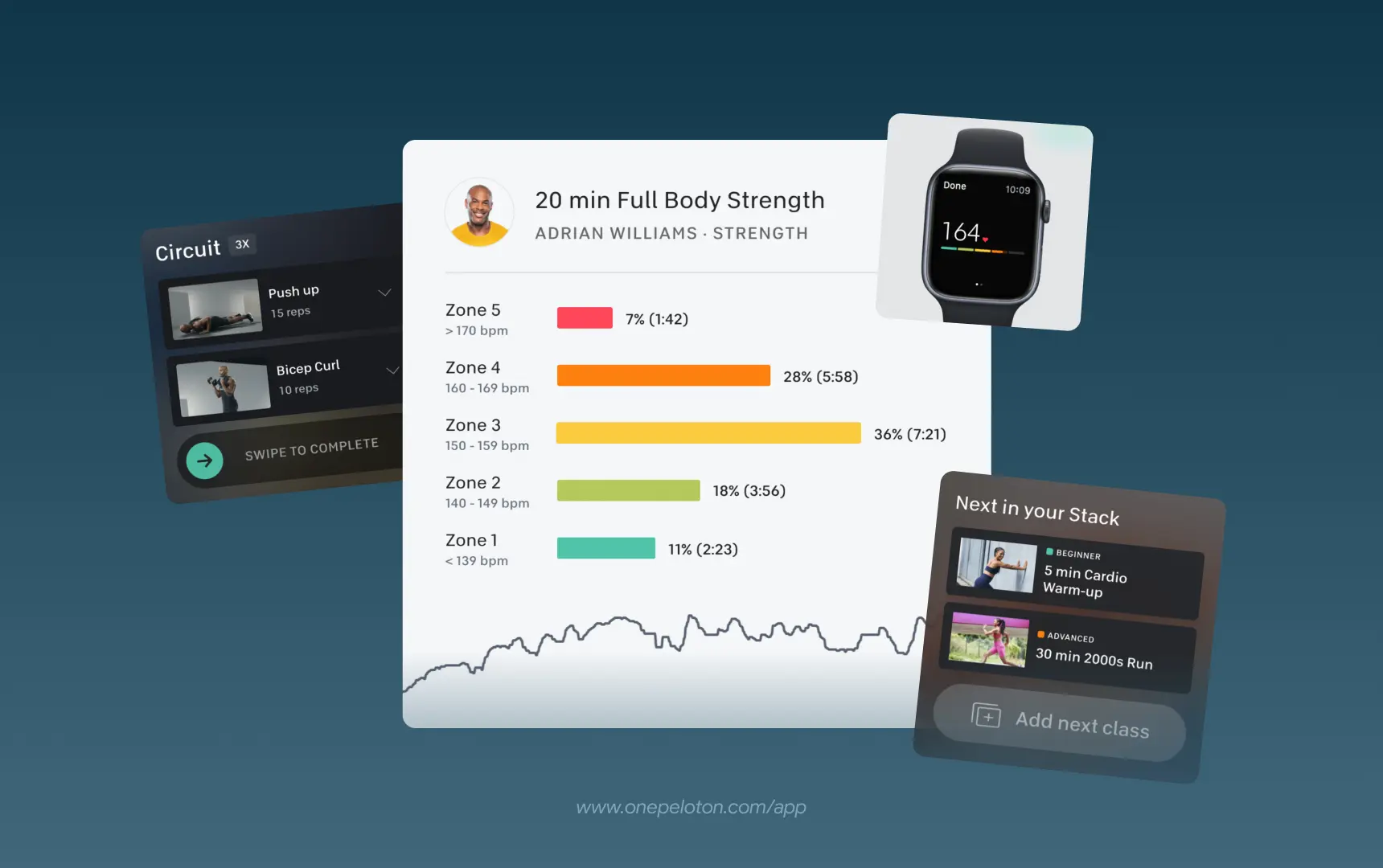
As for purchasable content, this can include video lessons for exercise or healthy cooking. Alternatively, you can run live classes with nutritionists and dieticians, akin to what Peloton does to great effect. This way, you can have a constant stream of revenue as long as you keep making new, useful content.
How Can JetBase Help You with Nutrition App Development?
We’ve covered the ins and outs of creating a nutrition app, showing the strength of the market and the ways to navigate it. Throughout it all, one thing remains key: with an industry this big, you can only make a good impression with a high-quality app. To guarantee that your product reaches that bar of quality, you only need one thing—a skilled team with the right experience.
JetBase can help, thanks to our decade-plus of experience and excellent communication skills. We pride ourselves on delivering above and beyond the client’s expectations and using the latest technologies. This makes our apps well-optimized, eye-catching, and successful. If you want to join the ranks of our satisfied clients, send us a message.

